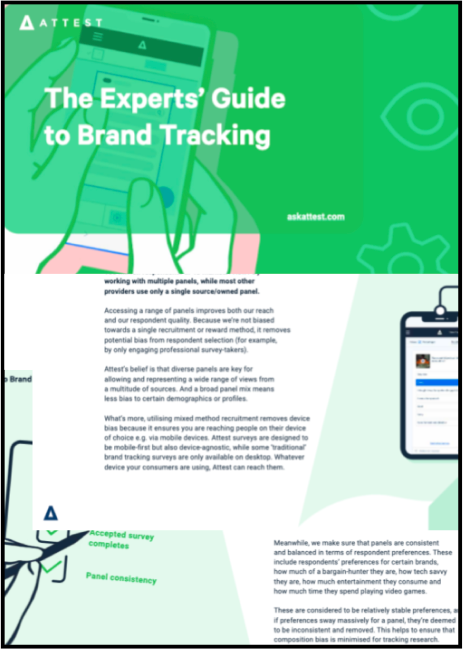What is brand integrity and why is it important?

Brands with integrity win out with consumers. Learn about the value of brand integrity in marketing, and get top tips on how to boost it.
Brands – they’re mysterious things. We use a whole host of buzzwords nowadays to sum up why some brands fail and some thrive. It’s easy to think that ‘brand integrity’ is just a wishy-washy measure of consumer sentiment – difficult to pinpoint, impossible to get right (unlike brand ROI.) But that’s not the case. In reality, brand integrity is a crucial, and very tangible, part of what can make or break brands – and in a changing consumer landscape, it gets more important by the day.
What is brand integrity, anyway?
People interact with your brand at lots of different times and in lots of different places. Everything from your product or service, your brand messaging, the imagery you use, and the reputation that precedes you will affect how your brand is perceived. Brand integrity, put simply, is a measure of that crucial perception people have of you – and every time you miss the mark on a brand promise, you risk losing some of that precious integrity you’ve built up in one reputation-damaging swoop.
What’s the value of brand integrity in marketing?
A great reputation speaks volumes so you don’t have to. Building and maintaining great brand integrity isn’t always the easiest thing to get right, especially with mounting consumer expectations and changes in the workplace. But the value it brings to marketing efforts is worth its weight in gold – and in 2019, brands with high integrity are winning with consumers.
Here are just some of the reasons to strive for great brand integrity:
You’ll be more trustworthy
Consumers connect with your brand across many different touchpoints, and when they do, they expect to be greeted with the same message every time. When that expectation is met, people will have more trust that your brand can deliver, and you’ll generate that all-important reputation of trustworthiness and reliability.
You’ll create brand advocacy
When people feel aligned with brands, they’re much more likely to become loyal advocates. Brands that deliver consistently on the things that matter to consumers not only have integrity, but also the support of the people. Your brand advocates are the people who support your message, engage the most with your content, and consistently recommend you to others, driving that reputation of brand integrity beyond your existing customers.
You’ll resonate better with your target audience
A brand with integrity is one that’s aligned across the board. Everything from messaging to the product is designed with a specific purpose in mind – and that resonates with the right people. When the focus is on a consistent, consumer-driven experience, and driven by alignment across all aspects of the brand, your message is more likely to reach niche audiences. Keeping that integrity and cohesive message on all-fronts turns those niche audience members into brand advocates, who can help you reach even more people in that same audience – and so the cycle continues.
You’ll differentiate yourself from competitors
There’s so much choice out there these days. Consumers (especially Gen Z) usually aren’t confined to one brand within any niche – if they’re dissatisfied, they have a wealth of knowledge at their fingertips, and can easily source an alternative. It’s essential, then, that there’s something differentiating you from every other brand in your niche – and the weight that integrity brings does just that. Being a brand with integrity uniquely positions you within your market. The combined oomph of being a trustworthy brand, with a powerful purpose and plenty of advocates within their niche, is a kind of brand strength that money can’t buy – and it might just be enough to set you apart.

The top ways to boost brand integrity
The benefits of brand integrity are clear. But how do you actually get there? And which things do you need to implement to make sure you’re not just gaining, but also maintaining, solid brand integrity?
Many leading marketers say that brand integrity is a marathon, not a sprint – and they’re right – but there are many things you can do to get going in the right direction. We’ve narrowed it down to five top ways to boost brand integrity, which you can use to build a reputable brand that people rely on. They are:
Being consistent and cohesive across channels
Consistency is hugely important when it comes to brand integrity. If a consumer is getting one message when they head to your website, and another one entirely when they check out your social channels, it’s easy for their perception of your brand to slip. This might sound trivial, but that cohesion across channels is what shows that there’s alignment on core values across the brand. Knowing that people will get a consistent experience with you makes you more reliable and trustworthy, and contributes to overall integrity.
Take Apple, for example – they’ve built a cohesive, interconnected, business ecosystem, that operates around real consumers. Their message is clear. Their brand is strong. They’re a brand with integrity, and their consistent messaging means they’re always adding value for users, as well as driving growth.
And it’s not just about being consistent for consistency’s sake. Inconsistent messaging can be damaging to brand integrity, particularly when the messaging isn’t aligned with the brand’s purpose and the beliefs and behaviours of their customers. CVS are an excellent example of this – after realising that selling tobacco was not aligned with their purpose of improving people’s health, they stopped selling it. This, alongside their rebranding to CVS Health, has removed the inconsistency that would’ve slowly eaten away at their brand integrity.
So how do you make sure you’re consistent? The best way is to make sure everyone across the brand is aligned on your core values. What’s your key messaging? Who is your brand helping? Aligning on all pieces of the brand puzzle might sound tedious, but it’s essential for building a brand that provides consumers with consistent, valuable experiences.
Having a brand purpose
What’s your brand’s reason for being? A brand purpose is something that consumers and employees alike can rally behind. Many people now expect brands to serve a social purpose, and actively choose to buy from brands that they align with on key social issues, even if it means spending more money. Serving a purpose is so central to growing a meaningful brand that it’s become almost synonymous with integrity. When your brand consistently affects positive social change, people notice – and in turn, they think your brand is more likely to care about consumers, care about what they’re selling, and be trustworthy.
Plenty of purpose-driven brands are killing it these days. Some brands are born with purpose at their core, and other big brands are taking a more purposeful approach as the times change. With brands upping the ante on purpose-driven marketing, it’s important to stay on top of what connects your brand to the world around you.
Being authentic and human
Consumers are cynical. Delivering a heavily edited, corporate message just won’t cut it anymore – to be seen as a brand with integrity, you also need to be seen as authentic.
A human tone of voice can go a long way to establish brand trust. Many brands are taking to social media and communicating with their customers using more authentic language – injecting humour, emojis, and colloquial tones to establish better connections. Avoiding one-sided conversation is a must – the brands with the most integrity are those who engage with people, offer genuine responses, and seek out that crucial interaction. Owning up to mistakes is also a powerful way to be seen as trustworthy.
The key to being an authentic brand is (shock!) actual authenticity – the genuine will to be an authentic brand. Wendy’s are a prime example of a brand that uses human language, tongue-in-cheek wit, and colloquialism within their brand voice to establish integrity. And a lot of the time, it really works. Where Wendy’s falls down, though, is in the inconsistency between their brand purpose and their jovial, people-focused interactions on social media. Their sourcing of produce from forced-labour farms and refusal to join the Fair Food Program doesn’t marry with their brand voice, and that lack of cohesion is enough for even the least cynical of consumers to recognise inauthenticity.
Being agile
Building brand integrity is one thing, but maintaining it is quite another. Sometimes it only takes one faux pas, one comment, or one action that deviates from your core values, and that integrity is no more. The best way to ensure you’re maintaining a consistent brand experience is to make sure your brand is agile.
With time, things change, and so do people’s needs. What’s important now might not be so important in a year’s time. The ability to be flexible and adapt is invaluable when it comes to maintaining a strong brand. In the same way, you’ll need to be agile to protect brand integrity when facing a global market. A slight change in direction to match consumer needs shows that you’re built to be open to change – as long as you’re not doing a u-turn on your brand’s core values.
See our brand tracking templates and real-life surveys
Our in-house experts—the Customer Research Team—have written these brand tracking survey templates that are ready to go! And see the results from example surveys we’ve sent to real consumers.
Measuring your brand
How do you know how your brand is doing if you’re not keeping tabs on it? Maybe you can get a sense from your sales or your mentions in the press – but the truth is, that’s only scratching the surface. Accurately tracking your brand health is essential to understanding your business, your customers, and the wants and needs of consumers at large.
To build and maintain integrity, regularly measuring your key brand health metrics is crucial. The best brands are always using insight to understand what they’re getting right, and what they’re missing the mark on. The sooner you can do that, the better – diminished brand integrity is a lagging indicator of a bigger problem.
Want to get tracking your brand, but don’t know where to start? Or unsure if you’re doing it right? Download our beginner’s guide to brand tracking for marketers to make sure you’re keeping tabs on your brand integrity.
Tell us what you think of this article by leaving a comment on LinkedIn.
Or share it on:

